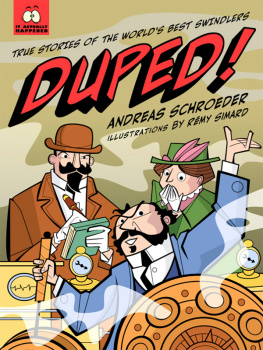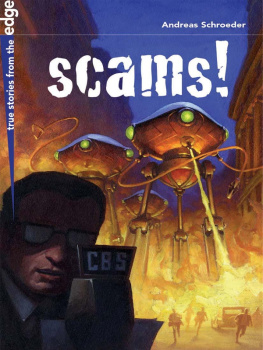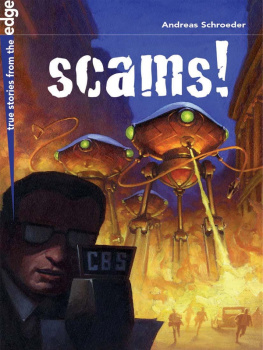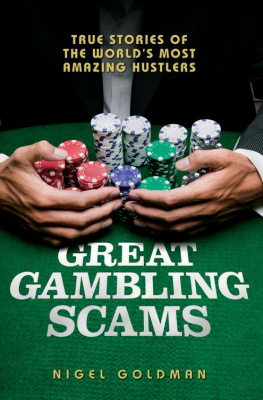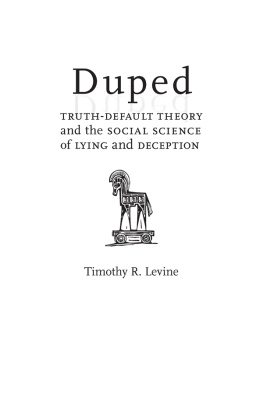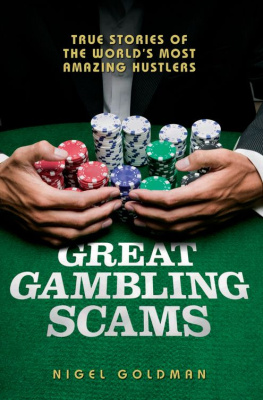This book is the first in the It Actually Happened series.
(text) 2011 Andreas Schroeder
(artwork) 2011 Rmy Simard
Edited byCatherine Marjoribanks
Proofread byLaura Edlund
Cover design bytheBookDesigners
Interior design byDaniel Choi Design & Communications, Timothy King
Cover and interior illustrations byRmy Simard
Telegram image (p 139) istockphoto.com / Jill Battaglia
Forged bank note image (p 109) courtesy of Lee Richards, www.psywar.org
ANNICK PRESS LTD.
All rights reserved. No part of this work covered by the copyrights hereon may be reproduced or used in any form or by any meansgraphic, electronic, or mechanicalwithout prior written permission of the publisher.
Distribution of this electronic edition without the permission of the publisher is illegal. Please do not participate in electronic piracy of copyrighted material; purchase only authorized electronic editions. Annick Press ebooks are distributed through Amazon, Apple, Barnes & Noble, Follett Books, Kobo, Overdrive, Sony, and other major online retailers. We appreciate your support of our authors rights.
This edition published in 2012 by
Annick Press Ltd.
15 Patricia Avenue
Toronto, ON M2M 1H9
We acknowledge the support of the Canada Council for the Arts, the Ontario Arts Council, and the Government of Canada through the Canada Book Fund (CBF) for our publishing activities.

CATALOGING IN PUBLICATION
Schroeder, Andreas, 1946
Duped! : true stories of the worlds best swindlers / by Andreas Schroeder ;
illustrated by Rmy Simard.
(It actually happened)
Includes bibliographical references.
ISBN 978-1-55451-351-2 (bound).ISBN 978-1-55451-350-5 (pbk.).
1. Swindlers and swindlingJuvenile literature. 2. FraudJuvenile literature.
3. HoaxesJuvenile literature. I. Simard, Rmy II. Title. III. Series: It actually
happened series
HV6691.S334 201 j364.16'3 C2011-902078-5
Visit our website at www.annickpress.com
Visit Andreas Schroeder at www.apschroeder.com
Visit Rmy Simard at www.remysimard.com
CONTENTS
INTRODUCTION
TOO GOOD TO BE TRUE?
I n 1916, an American named Louis Enricht announced that hed invented a cheap additive that turned tap water into automotive fuel. While World War I raged in Europe and gasoline sold for a whopping 30 cents a gallon, Enricht claimed that his additive would bring the per-gallon cost down to a single penny.
They didand it worked! Enrichts demonstrations were so convincing, in fact, that the world-famous automaker Henry Ford offered him millions for the rights to his additive.
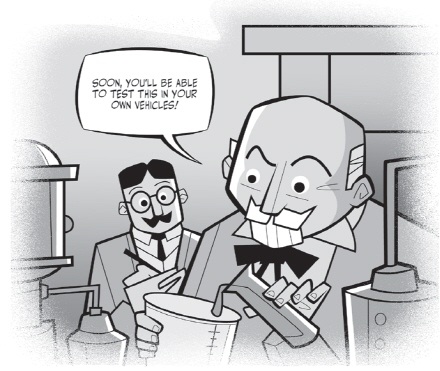
Actually, Enricht had merely discovered that if you add a very cheap chemical called acetone to water, it will run an enginefor a while. Then it will destroy it. But before anyone found that out, he convinced not only Henry Ford but several other famous American businessmen to give him millions for his worthless invention.
When we hear about a scam, we might think: How could those people have let themselves be fooled so easily? It would make sense if only stupid people fell for scamsbut intelligent people do too.
So what makes perfectly smart people fall for crooks like Louis Enricht? Sometimes its just greed. Its one of the oldest motivators of humankind, for both the scam artists and their dupes.
Oscar Hartzell, a failed farmer and rancher from Iowa, understood that well when, in 1913, he contacted everyone in the United States whose surname was Drake. He told them that, due to a bureaucratic bungle, the estate of the famous British pirate Sir Francis Drake had never been paid out to his heirs. It had been gathering interest for over 300 years and was now worth 4 trillion dollarsenough to buy all of England, Scotland, Ireland, and Wales! Hartzell invited Drakes from all over North America to invest in his campaign to take the British government to court to retrieve that money. He promised that everyone would make at least 500 dollars for every dollar invested.
Most scam artists fool their victims into giving them money. Some, however, are after love or power or fame.
You wouldnt believe how many people fell for that scam. Tens of thousands! Hartzell was able to move to England and live like a king in a mansion. The FBI investigated his story and announced it to be a lie (Sir Francis Drakes wife had received her husbands estate in 1597), but people kept sending Hartzell their money.
Well, some might say, that was a long time ago, people werent as sophisticated then. But consider some of the scams that operate today, like the famous Nigerian Letter people have been receiving via e-mail for years. In it, a close relative of a Nigerian politician informs the recipient that the politician managed to smuggle a fortune out of the country before his recent death. If the individual agrees to help, the relative will give the e-mail contact 25 percent of the fortune.
Then the scam begins. The person being scammed is told that a security company will pass on the fortune when they receive an administrative fee of $2,000. But it doesnt stop theremore requests follow: a customs fee, a notarization fee, a clearance fee, and so on, as long as they can keep stringing someone along. At no point does the person targeted receive any payment. Thousands of people get duped by this kind of scam every year.
Greed drives many scams. But so do need and desperation.
Hartzell was finally arrested,tried, and sent to prison. However,the flow of money didntstop until he died, in a prisonhospital, after operating hisscam for over 30 years.
The people who fall for these scams do so because they want this solution to be real. Theyre willing to invest their hope and their money in the tiny possibility that they might really get whats promised.
An urgent need, or the desire to reverse bad luck, drives many stories in this collection. A young Englishman resorts to an extraordinary scheme to win his fathers approval. A yacht race contestant with a leaky boat finds success in an ingenious way. A French peasant cooks up a clever ruse to win the acceptance of high society.
Not all scams are amusing, but the best of them are totally fascinating. The following 8 stories explore some of the most inventive and outrageous scams of all time.

THE TASADAY
STONE AGE CAVE-DWELLERS OF THE PHILIPPINES
This scam not only made headlines around the world, but also duped world-renowned scientists into rethinking their theories about human evolution.
THE PLAYERS
The politician, the tribe, and the world that watched them
I n August 1971, a helicopter with four passengers and two flight crew took off from Davao Airport on Mindanao Island in the southern Philippines, headed for an unknown destination. Only powerful government officials were allowed to keep their flight plans so secret. The helicopter was under the command of Manuel Elizalde Jr., head of the Filipino Ministry for National Minorities and a close friend of the president of the Philippines, Ferdinand Marcos.

